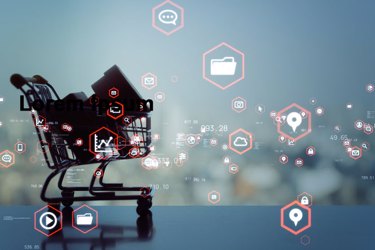eGroceries – There Are No Quick Fixes
By Frank Kouretas, Orckestra (powered by mdf commerce)

The ongoing pandemic has had a significant influence on businesses and consumers alike. It has permanently revolutionized how businesses interact with the end consumer and retail grocery is no exception. While the shift to online was in the works before 2020, the past two years have accelerated the adoption of online shopping. Statista projected worldwide online buyers to top 2.14 billion by the end of 2021. Furthermore, according to a report by Research and Markets global online grocery market is expected to reach US$550.7 billion by 2027.
As we come to terms with the new normal, it is evident that some of these changes are here to stay. According to PayPal’s initial survey in March 2020, only 19% of consumers engaged in online grocery shopping. In its July 2021 survey, that number had jumped to 49%.
Retailers Respond To The E-Grocery Boom Fueled By The Pandemic
To meet this increasing demand for online grocery shopping, retailers had to adopt new and innovative business models quickly. Faced with rapidly evolving consumer behavior, many retailers opted for the easy way out as they turned to full third-party delivery services that also handle in-store fulfillment. This enabled them to rapidly shift their business model without any significant infrastructure and technology changes.
Full Third-Party Delivery And Order Fulfillment Services As A Quick Stand-In
Opting for full third-party delivery and order fulfillment services came with many short-term advantages, allowing retailers to offer online grocery solutions overnight. Their quick and low-cost implementation also meant that the grocers could forgo hiring resources or training existing staff to run these additional functions.
The opportunity to tap demographics that grocers have never been able to service before also made the deal look sweeter for both grocers, who could still conduct business without the hassle of an additional setup, and full third-party delivery services, that created a business model out of this supply-demand mismatch. However, this lucrative solution may not be sustainable in the long run for grocers that intend to make the online channel an important part of their business.
Rapid, Easy, And Affordable, However Not Sustainable
While the short-term advantages of full third-party delivery and order fulfillment services may seem tempting, there are a lot of other factors with long-term consequences that are often overlooked and that can negatively impact a brand and a business.
Some of its setbacks include:
- Expensive for shoppers – This solution can increase the cost to the customer by as much as 35%, which can lead to cart abandonment or drive customers to the competition.
- Expensive for grocers – This option often represents between 5% and 10% of the turnover generated. Since grocers typically work with very thin profit margins, this additional cost can have a significant impact on overall profit. Moreover, full third-party delivery services solutions can be up to 2.5x more expensive for grocers than setting up their own omni-channel solution over three years.
- Loss of brand control – Outsourcing fulfillment means losing control over direct branding touchpoints with consumers, e.g., the delivery website or the customer experience. If they don’t meet consumer expectations, they might move on to a competitor.
- Loss of customer data authority – Full third-party delivery services now own the partner retailer’s customer data and can choose to use it, turning them into competitors. A recent Inmar Intelligence survey points that 85% of retail brand executives think that third-party digital marketplace providers are trying to compete with them to eventually set up their own distribution centers. Furthermore, since retailers don’t own their customer data, they can’t use it to curate personalized customer experiences, which can affect the brand-customer relationship in the long run.
- Impact on consumer loyalty - The direct customer relationship is lost to third-party delivery services, which greatly reduces brand loyalty as there is minimum to no association to the brand in the retail transaction.
All these factors make full third-party delivery services unsustainable in the long run, forcing retailers to figure out the best alternative for optimal ROI.
Your Best Foot Forward
For retailers that are looking to scale while maintaining the long-term sustainability of their business, it is time to reconsider. While a third-party delivery and fulfillment service is a quick way to reach new markets without significant initial investment, it’s no match for a well-designed and seamless shopping experience delivered via an owned online supermarket. Third-party services may still be used to provide the actual last-mile delivery or to augment a grocer's in-house delivery capability, while the grocer owns the end-to-end customer experience and fulfillment of customer orders.
More and more grocers are now coming to recognize the importance of owned omni-channel setup. According to a new Inmar Intelligence survey of retail brand executives, 89% are actively improving in-store and online experiences for shoppers. In turn, 87% deem technology investments to upgrade their e-commerce platform as a high priority in providing more engaging shopping experiences.
To be competitive, it’s vital to maintain control over the customer experience, data, and margins. The best way to do this is to choose a future-proof solution that can help achieve long-term goals while leveraging the fulfillment model that makes the most sense for you in different regions whether this includes in-store fulfillment, dark stores, automated warehouses, the user of last-mile delivery providers or a mix of all these options.
About The Author
As Chief Product Officer at Orckestra (powered by mdf commerce), Frank leads product strategy and product management, driving the next wave of commerce innovation and beautifully simple shopping experiences. Frank is passionate about building and marketing innovative technology products and brings over 15 years of leadership experience in product development, product management, and marketing. Prior to joining Orckestra, Frank was VP of Products and Marketing at Radialpoint where he led the development of innovative customer experience products used by some of the world’s leading service providers to support millions of customers.
